Lenovo ThinkEdge SE360 V2 review: The littlest edge server
A versatile and NVMe-dense edge server that puts big power in tight spaces
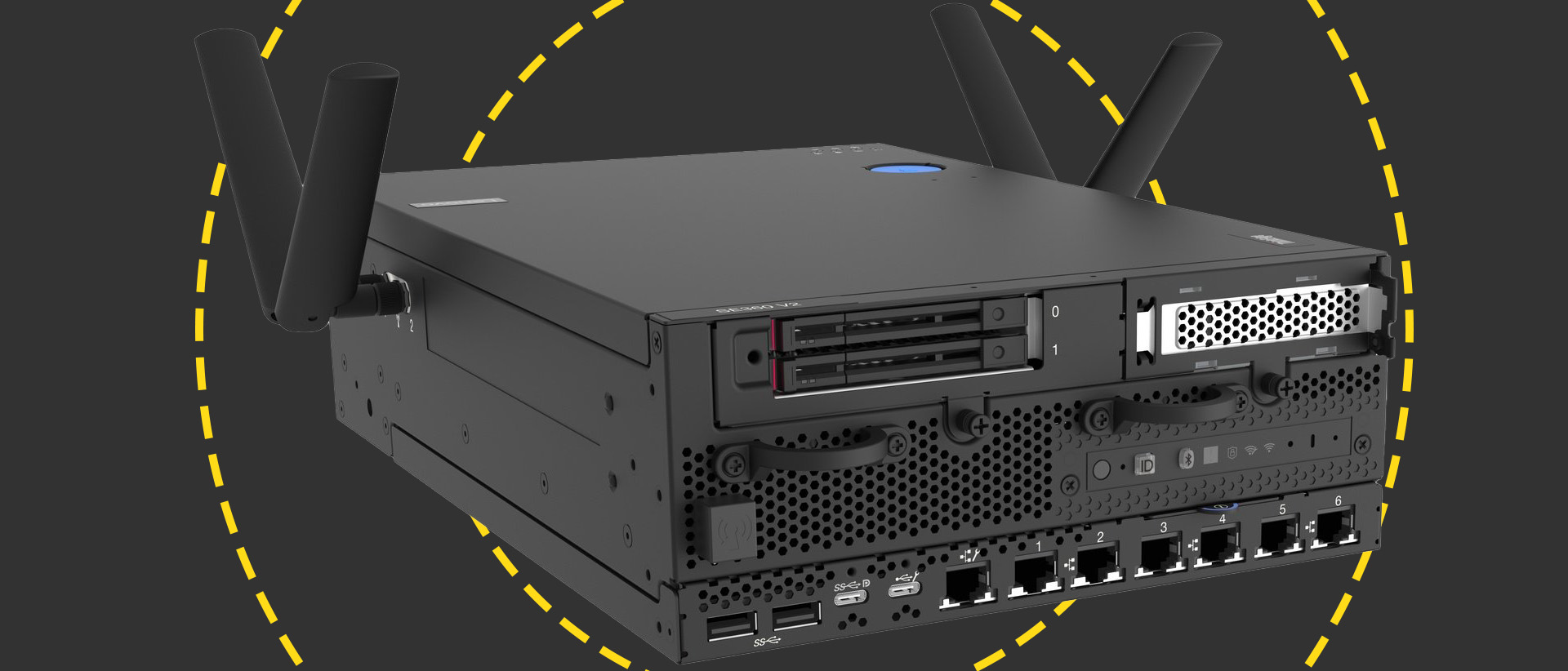
-
+
Remarkably small chassis
-
+
Rugged design
-
+
Xeon D-2700 CPU
-
+
Dual GPU support
-
+
High NVMe SSD density
-
+
Good remote management
-
-
Riser cage tricky to remove

Lenovo has always had a sharp focus on edge computing and continues to push further into the outer limits with a server that's one of the smallest we've seen. Measuring only 212mm wide, 318mm deep, and 2U high, the ultra-compact ThinkEdge SE360 V2 delivers an impressive hardware specification that belies its modest dimensions.
READ MORE

Targeting a wide range of applications including edge AI, machine learning, smart surveillance, and video analytics, the SE360 V2 is geared up for harsh environments. Its ruggedized chassis is shock and vibration-resistant, accepts optional front and rear dust filters, and can handle ambient temperatures up to 55 degrees C.
Placement options are extensive as the server can be rack, wall, and ceiling mounted or placed on a desk. Its extreme narrowness also allows two servers to be fitted side by side in a standard rack or wall-mount cabinet.
The SE360 V2 offers plenty of data security and physical protection measures. Along with support for SEDs (self-encrypting drives), all models include upper and lower intrusion switches plus a customizable motion detector and if any are triggered, the server can be set to go into a lockdown mode.
Lenovo ThinkEdge SE360 V2 review: Hardware
Lenovo has kept the chassis size down by moving power outside the box. Two connector blocks are located at the rear and along with the dual 300W external PSUs provided with our system, the SE360 V2 supports DC direct connections and a pure AC input mode with the latter two options required for the higher 55 degrees C operating limit.
The server supports a single Xeon D-2700 CPU – our system was supplied with an 8-core 2.1GHz Xeon D-2733NT but you can opt for 4, 12, or 16-core models (the 20-core D-2796TE is available on special bid orders). We also received a healthy 128GB of TruDDR4 memory made up of four 32GB sticks and this can be pushed to a maximum of 256GB.
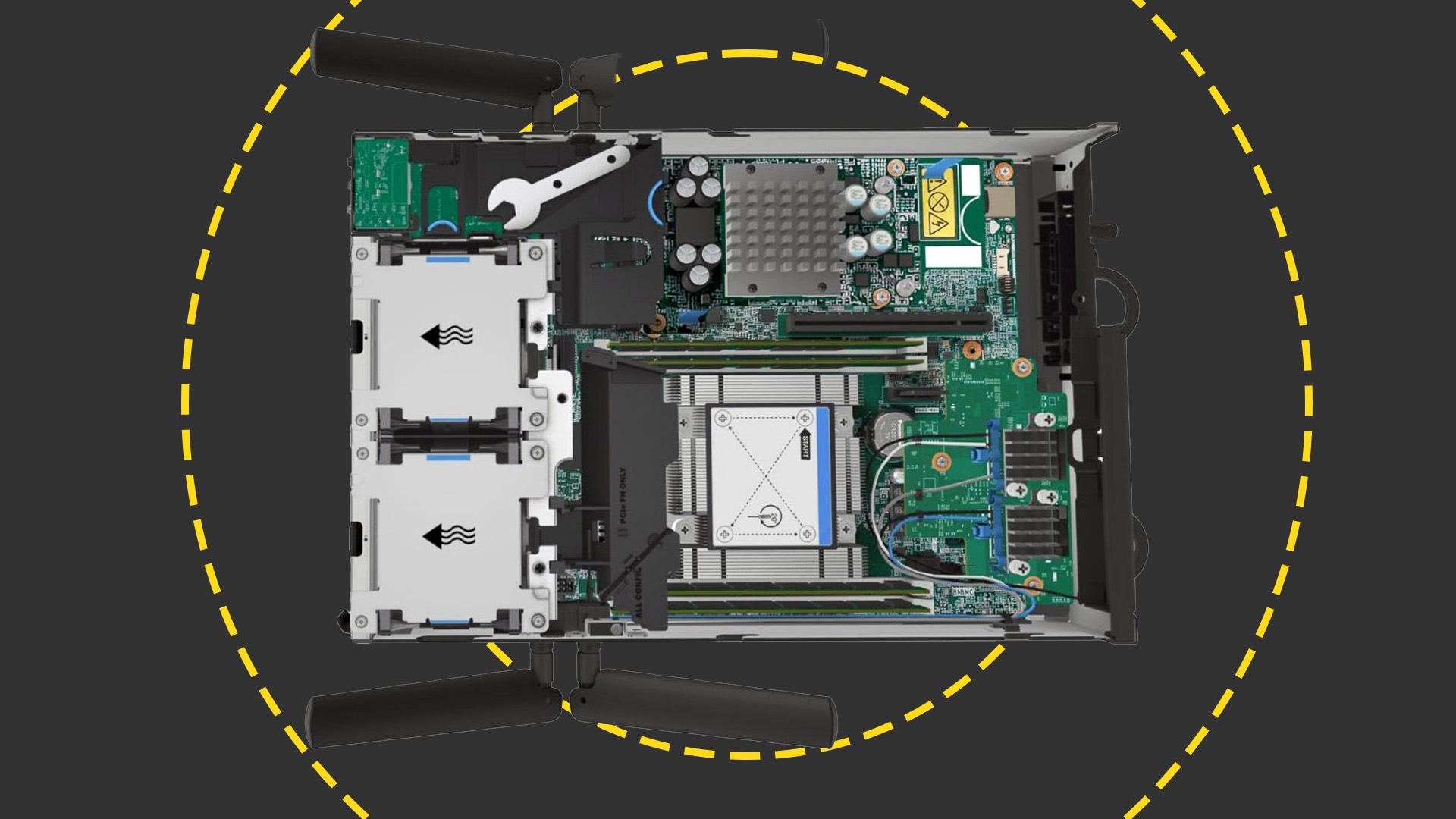
Unlike the SE350 V2, this model has space inside for two PCIe Gen4 expansion slots. They can be used for extra network adapters or for up to two GPUs with Nvidia's A2 or L4 and Qualcomm's Cloud AI 100 cards on Lenovo's guest list.
Sign up today and you will receive a free copy of our Future Focus 2025 report - the leading guidance on AI, cybersecurity and other IT challenges as per 700+ senior executives
Standard network connections are handled by a choice of two modules that use a dedicated motherboard connector. Our system had the dual 2.5GbE and quad Gigabit module which also includes a bunch of USB ports and a remote management port or you can choose the module that supplants the Gigabit ports with four of the 10/25GbE SFP28 variety.
Lenovo ThinkEdge SE360 V2 review: Storage and expansion
The SE360 V2 offers an interesting mix of storage features with the optional dual front drive bays supporting 7mm NVMe or SATA SFF SSDs. Internally, it's the M.2 form factor across the board as you can add two 2280 NVMe SSDs mirrored boot devices and partner them with up to eight 2280/22110 NVMe SSDs for data storage.
All RAID configurations are handled by Intel's embedded VROC (virtual RAID on CPU) controller and you'll need to think about possible license upgrades as the basic version only supports SATA drives and RAID0 or 1 arrays. If you want NVMe support, you'll need to purchase a Standard key which adds NVMe RAID10 or a Premium key for RAID5 support.
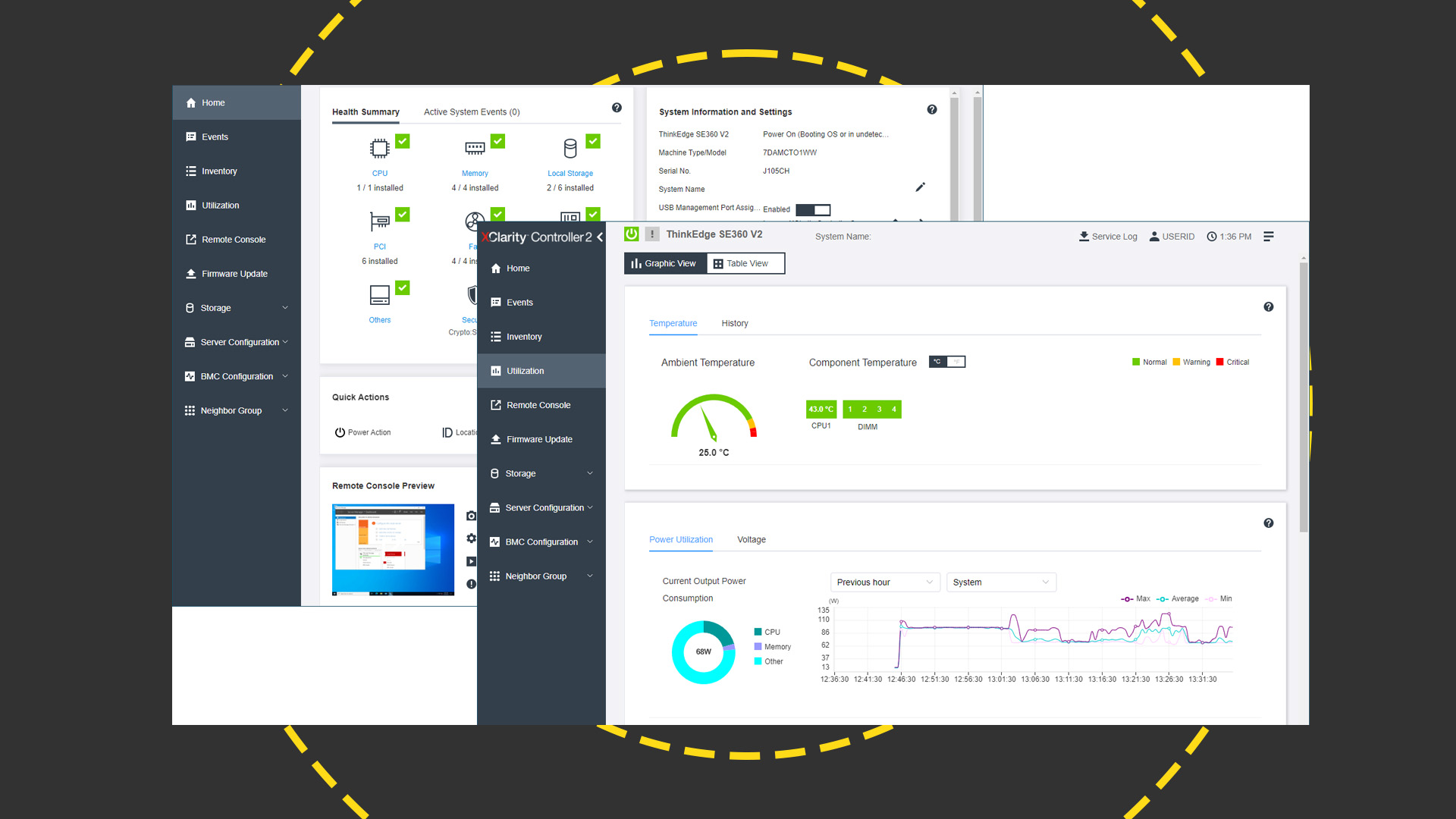
Be prepared for some serious screwdriver action for upgrades as the main riser cage is secured by eight screws and needs to be carefully removed to avoid any cables coming loose. Lenovo offers a choice of riser cards with options for a PCIe slot on each side or in our case, a single slot on the right with the other side occupied by the two SFF SSD bays.
With a dual slot riser, you can add adapters each with four M.2 NVMe SSD slots. You'll find two easily accessible M.2 boot drive slots behind the server's lower cover and there's room for an optional dual M.2 NVMe cabled adapter there as well, although this will be disabled if you have both SSD adapter cards on the riser.
Wireless and Bluetooth 5 are on the menu as Lenovo's optional dual-slot adapter can be plugged in at the front of the motherboard. Wireless aerials are fitted on each side of the chassis using SMA connectors and the WLAN module employs an Intel AX210 chip so WiFi 6/6E and WPA3 encryption are supported.
Lenovo ThinkEdge SE360 V2 review: Remote management
Remote management looks good as the SE360 V2 sports the same XClarity Controller (XCC) 2 chip and dedicated Gigabit port as offered by Lenovo's larger ThinkSystem servers. An XCC Standard license enables features such as remote power controls, sensor monitoring, and inventory while a Platinum upgrade adds remote KVM, virtual media services, remote OS deployment, power-capping, and the Neighbour group management feature where multiple servers can be managed from one XCC interface.
The XCC provisioning manager makes light work of RAID configuration and OS installation. Using the XCC remote console to mount a virtual Windows Server 2022 ISO, we selected the 'Effortless Install' option and watched it load the OS in 35 minutes with no further intervention required.
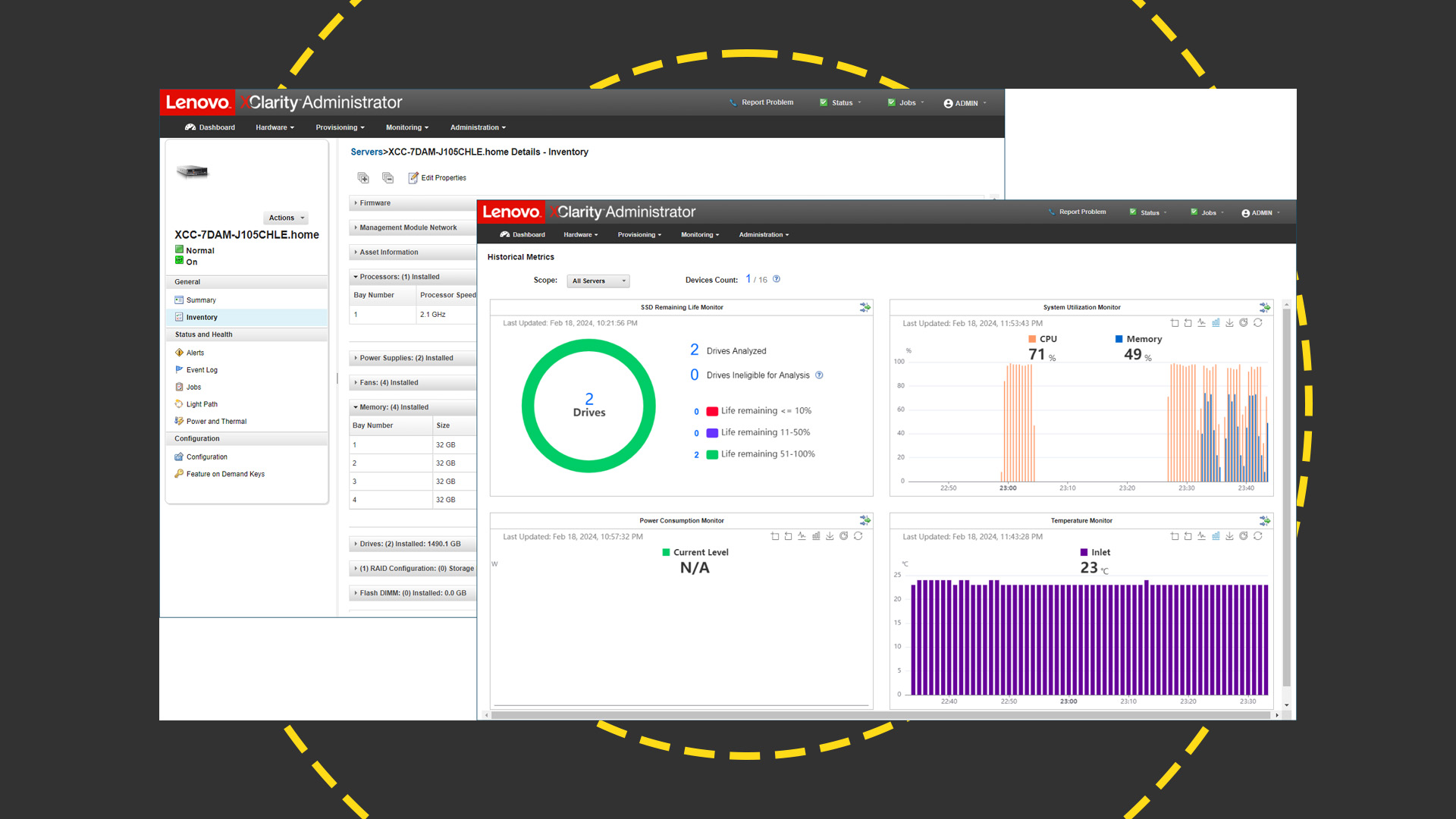
Lenovo's XClarity Administrator provides centralized remote management of all Lenovo systems and we run this in the lab as a Hyper-V VM. After discovering the SE360 V2, it provided a full inventory, system, and power utilization details, power controls, and options for remote OS deployments and firmware updates.
Lenovo ThinkEdge SE360 V2 review: Is it worth it?
The ThinkEdge SE360 V2 shows Lenovo is getting very serious about edge computing. Its innovative design packs a remarkable server package into the smallest of spaces and value looks good too, with prices for entry-level models starting at around £2,400.
The rugged chassis allows it to operate comfortably in hostile environments but take your time with hardware upgrades as internal space is quite restricted. Nevertheless, it delivers a powerful processing package with a surprising expansion potential and support for plenty of M.2 NVMe SSDs and two GPU cards making it very versatile.
Lenovo ThinkEdge SE360 V2 specifications
| Chassis | 2U rack/wall/ceiling/desk mount |
| CPU | 8-core 2.1GHz Intel Xeon D-2733NT |
| Memory | 128GB 3,200MHz TruDDR4 RDIMM (max 256GB) |
| Storage | 2 x 800GB 7mm NVMe SFF SSDs |
| Other storage | 2 x M.2 2280 NVMe boot drives, 8 x M.2 2280/22110 NVMe drives |
| RAID | Intel VROC SATA (key required for NVMe support) |
| Network | 2 x 2.5GbE, 4 x 1GbE |
| Expansion | 1 x PCIe Gen 4 16x (max 2) |
| Power | 2 x 500W external PSUs |
| Management | XClarity Controller, XClarity Administrator |
| Warranty | 3Yr on-site NBD |
Dave is an IT consultant and freelance journalist specialising in hands-on reviews of computer networking products covering all market sectors from small businesses to enterprises. Founder of Binary Testing Ltd – the UK’s premier independent network testing laboratory - Dave has over 45 years of experience in the IT industry.
Dave has produced many thousands of in-depth business networking product reviews from his lab which have been reproduced globally. Writing for ITPro and its sister title, PC Pro, he covers all areas of business IT infrastructure, including servers, storage, network security, data protection, cloud, infrastructure and services.
-
 Qualcomm the data center with $2.4 billion Alphawave Semi acquisition
Qualcomm the data center with $2.4 billion Alphawave Semi acquisitionNews The move sees Qualcomm absorb Alphawave Semi’s portfolio of custom silicon, high-speed connectivity solutions, and chiplets
By Daniel Todd Published
-
 ‘If software development were an F1 race, these inefficiencies are the pit stops that eat into lap time’: Why developers need to sharpen their focus on documentation
‘If software development were an F1 race, these inefficiencies are the pit stops that eat into lap time’: Why developers need to sharpen their focus on documentationNews Poor documentation is a leading frustration for developers, research shows, but many are shirking responsibilities – and it's having a huge impact on efficiency.
By Ross Kelly Published
-
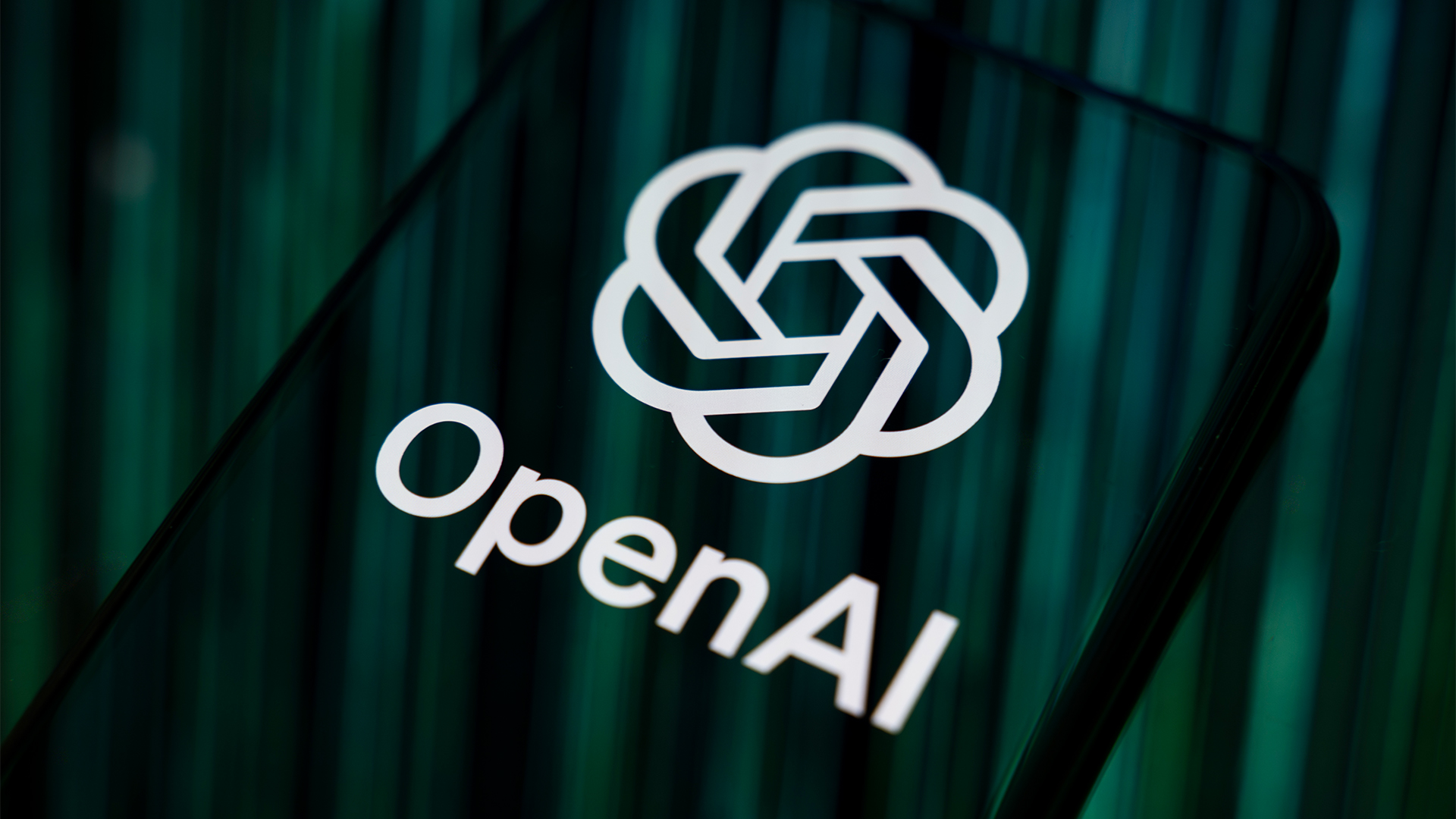 OpenAI says GPT-5.2-Codex is its ‘most advanced agentic coding model yet’ – here’s what developers and cyber teams can expect
OpenAI says GPT-5.2-Codex is its ‘most advanced agentic coding model yet’ – here’s what developers and cyber teams can expectNews GPT-5.2 Codex is available immediately for paid ChatGPT users and API access will be rolled out in “coming weeks”
By Ross Kelly Published
